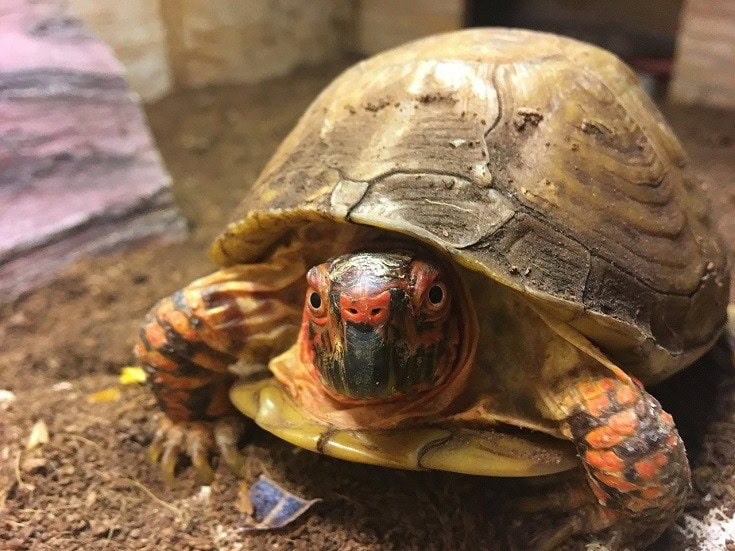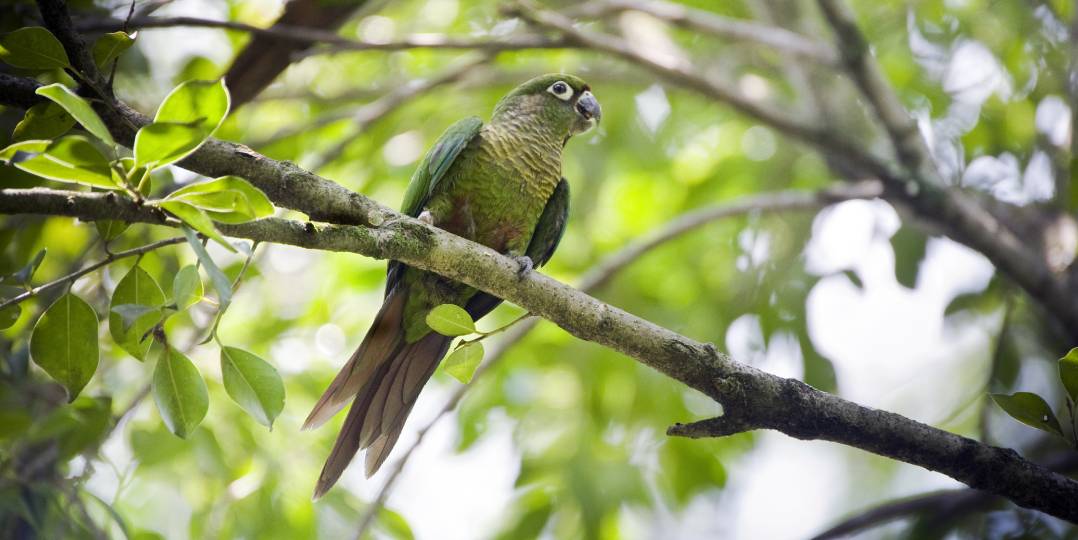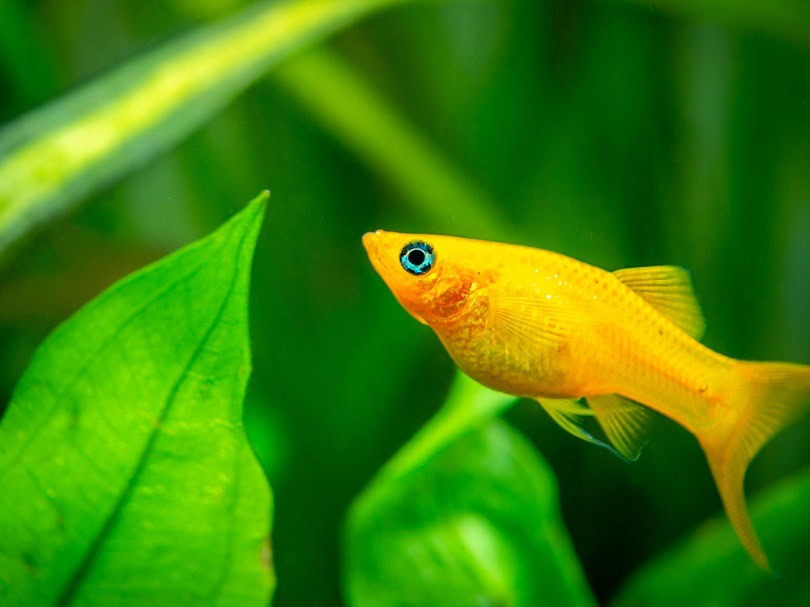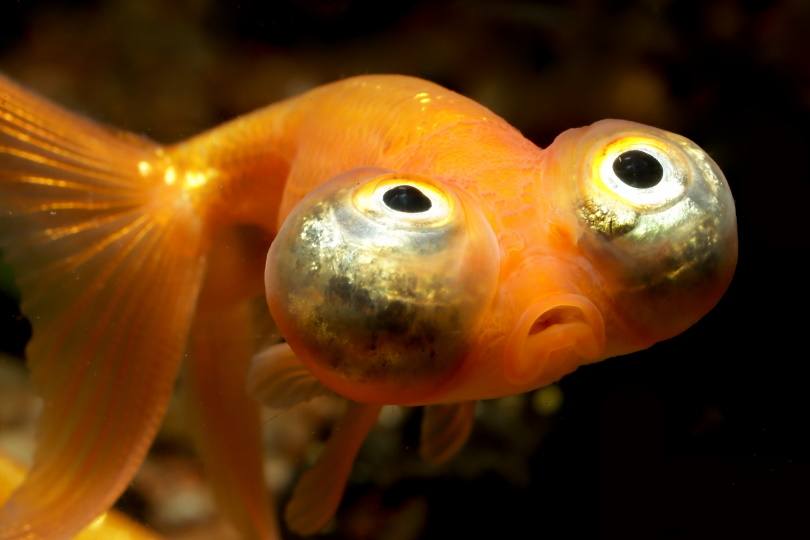Click to Skip Ahead
The Eastern Box Turtle is native to the eastern parts of the United States and is a subspecies of the common box turtle. While they aren’t technically a tortoise, they are primarily terrestrial and don’t spend much time in the water.
They are extremely slow crawling, live quite a long time, mature rather slowly, and have relatively few offspring every year. They are also considered vulnerable, partly due to their low reproduction rate. Sadly, due to their slow pace, they also tend to get hit by agricultural equipment and cars.1 Due to their widespread, if gradual, decline, their conversation status was downgraded in 2011 and has yet to improve.2

Quick Facts About the Eastern Box Turtle
| Species | T. carolina |
| Family | Emydidae |
| Care Level | Low |
| Temperature | 70–85°F |
| Temperament | Docile, shy |
| Color Form | Brown and black with yellow or orange markings |
| Lifespan | 25–35 years |
| Size | 4” x 6” |
| Diet | Varied |
| Minimum Tank Size | 75 gallons |
| Tank Setup | Open ground |
| Compatibility | Other turtle species |
Eastern Box Turtle Overview
As a pet, the Eastern Box Turtle is easy to house. They don’t require much work and are straightforward to care for. However, they do have a long lifespan, so you must be prepared to take care of them for a long time. You will likely be taking care of them for much of your life.
They are incredibly adaptable to home environments, which makes them a good option for many different owners. They are suitable for beginners and experienced reptile owners. They typically have high-domed shells that are bright yellow and orange, making them look unique compared to other turtles.
Due to their wide adaptability, they don’t need particular tank setups.

How Much Do Eastern Box Turtles Cost?
These turtles can cost anywhere between $140 and $360. This is largely due to their low reproduction rate. They don’t have many babies each year, which often causes their price to rise substantially. We recommend meeting the breeder before making your purchase. You may be able to purchase a turtle from a pet store, though many do not carry them.
Breeders will often be able to provide the best advice when it comes to these turtles. Plus, they often know how to raise babies properly. This ensures that the turtle is adequately taken care of, which helps ensure that they are healthy.

Typical Behavior & Temperament

These turtles are active during the day. In the wild, they would naturally spend this time foraging for food. Of course, in captivity, this is not necessary. They don’t prefer handling much, as this causes stress. When completely stressed, these turtles will retreat into their shell. This is their natural resistance to predators. If they are afraid that a predator might injure them, they will hide.
It is still important to encourage tameness with frequent handling. This should be gentle and mostly for the turtle’s benefit. You want them to be calm if they need to be handled more extensively, like due to illness. This also helps minimize stress during cage cleanings.
Many owners report that these turtles are quite social and don’t mind being watched by their owners. However, they also seem to have unique personality traits, so not all turtles will be as outgoing as others. Often, they will learn to recognize their owner or those who feed them. It isn’t uncommon for them to beg for food when they see people.
Some may play with toys, so you may wish to furnish them with a small ball and similar toys.

Appearance & Varieties

Their high, dome-like shell defines these turtles. They have a total shell closure, which means that their shell is completely closed on one side. Some color variation does exist but only slightly. Usually, they are brown or black with a yellow or orange pattern. All turtles are unique with their patterns, though. Some males also have blue patches on their cheeks and other areas. However, this is rare and only present in some turtles.
When scared, these turtles can completely close their shells, which means they can pull hinged sections of their shells over the openings, effectively enclosing them in bone. Their shells are not removable and are permanently attached to their bodies.
The shell does have some capacity to regenerate. Over time, the damaged areas will fall off as the new tissue grows. The shell continues to grow over the turtle’s lifespan.

How to Take Care of an Eastern Box Turtle
Habitat, Tank Conditions & Setup
These turtles need quite a bit of room to roam. For hatchlings, a 20-gallon tank may be suitable. However, as the turtles get older, they will need a much larger tank. It should be at least 4 square inches and at least 18 inches tall. You can also keep them outside if the climate is appropriate. Outdoor enclosures are ideal if you can muster it.
If you keep the turtle outside, ensure that the pen is protected from predators and harsh weather. There should be sunny spots and shady spots. All plants should be turtle-safe and pesticides should be avoided.
The turtle should have access to plenty of hiding spots regularly. They like loose litter for burrowing, which they will do quite often. A shallow pan of water should be provided at all times. Remove the dirty substrate weekly when you clean the tank.

Lighting & Temperature
These turtles prefer a sunny spot to bask in that is between 85 and 88°F. There should also be a shaded area that is around 75°F. The temperature should never drop below 70°F, even at nighttime. If it becomes colder like that outside, you should remove the turtle, and bring them inside with the appropriate enclosure.
Some natural outdoor light is best for these turtles, as it helps them make vitamin D. However, you can also use a UVB bulb indoors to meet this need. The lightbulb should be on for at least 10 to 12 hours a day. You’ll likely need to change the bulb every 6 to 9 months. Follow the instructions of your light for the best results.
Humidity
The humidity should be at least 70% at all times. You can achieve this indoors with daily misting, which will help it more closely resemble the forest floor. A shallow pool of water should be provided to increase the humidity of the enclosure.
Use bedding that mirrors the natural environment of these turtles. Mulch and moss-type substrates are best, as these help maintain moisture. You can even mix two different substrates. The substrate should be deep enough for burrowing, especially in shady areas.

Do Eastern Box Turtles Get Along With Other Pets?
These turtles can often live with other turtle species. However, besides that, they will eat just about everything else, including fish and amphibians. You can keep them with other turtles as long as all their needs are adequately met. You should avoid putting them with turtles of many different sizes, as this can cause severe problems with competition.
These turtles are best kept separate, but you can keep them with other turtles if you are cautious.

What to Feed Your Eastern Box Turtle
In the wild, these turtles eat a large variety of food. They are opportunistic and eat anything that falls into their path. In captivity, their diet should be as close to a healthy diet as possible. They should eat about once every 24 hours. Half of their diet should include veggies, fruit, and grasses. They tend to like things that are brightly colored, like red bell peppers.
Everything else in their diet should be a low-fat protein source, like earthworms, slugs, snails, and mealworms. They can eat low-fat dog food and lean meats, but these should be included only occasionally. Younger turtles usually need more protein because of their rapid growth. Older turtles aren’t growing as much, so they need significantly less protein.
A shallow pan of water should be provided to allow these turtles to wade in the water as they see ft. However, they tend to leave droppings in water, so you will need to refresh it daily.

Keeping Your Eastern Box Turtle Healthy
These turtles require quite a bit of commitment due to their long lifespan. Routine vet care is essential to ensure that they are growing correctly and consuming the correct diet. A vet visit should be done at least once a year with an exotic animal vet. If your turtle lives outside, parasitic exams should be done too. This is the most common health problem these turtles face. The signs include abnormal feces, but no signs at all are typical.
Respiratory infections are also common, especially if their environment is too dry. Labored breathing should be seen by a turtle quickly, as it can be severe. Cold can also cause this problem, though in a less severe manner.
Box turtles can develop problems with their shells, such as rot and ulcers. If their shell starts smelling strange, you should check them with your vet. Usually, this is due to a poor diet or unsanitary habitat.
Once these turtles are comfortable, they are often not aggressive. They should be given plenty of hiding spots to prevent them from feeling overly exposed, which can cause aggression. It can be a sign of discomfort and therefore, illness.
Breeding
These turtles typically breed in the spring through fall. After a good rain, the males will become active in their search for females. They do not mate for life, so they often mate with many females at a time
In captivity, they breed similarly. Keeping them outdoors is the best way to achieve this, especially if you live in a good area. Their breeding in the wild should be done with responsibility. They may not eat as much when trying to mate and will likely devote much of their time to mating. These turtles can be a bit anxious when breeding, so things should be kept remarkably calm.

Are Eastern Box Turtles Suitable for You?
These turtles are generally easy to take care of, but they require significant amounts of space, especially if you’ll need to keep them indoors. Plan on having more room than you may think they need. They can thrive in a tank when little, but they will quickly outgrow it.
For this reason, we only recommend these turtles for beginners and experts if you have enough room. They do need to be fed daily, but this should not take an extensive amount of time.
Featured Image Credit: Piqsels










